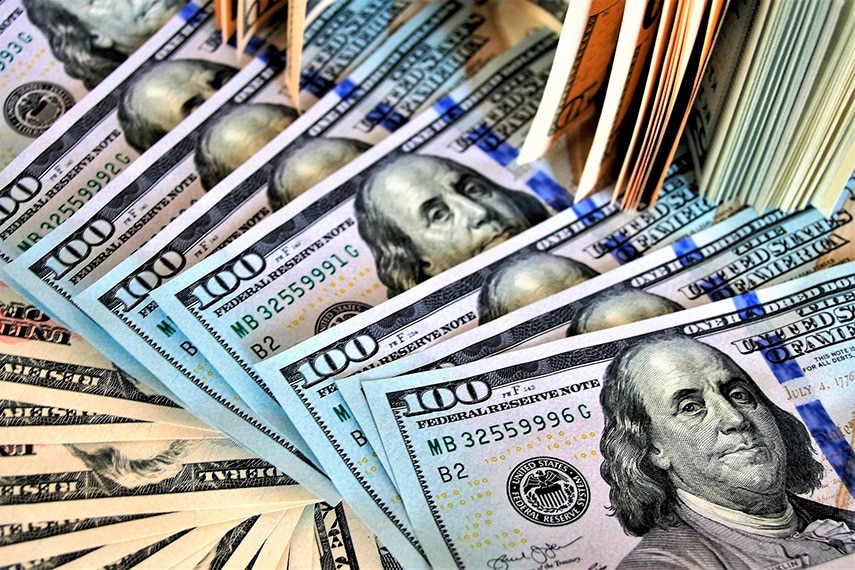Will the Fed Continue Cutting Interest Rates?
With the recent unease in financial markets, one question that has been on many people’s minds is: what will the Federal Reserve do with interest rates The Fed has paused its interest rate cuts...
Federal Reserve

If you thought that quantitative easing was a thing of the past, a response to the financial crisis that was dead and buried, think again. Not only is it not a relic, it is a policy response that has now become the Fed’s number one policy tool. Every time something potentially negative affects the economy, the Fed will now resort to quantitative easing.
You could be forgiven for thinking that QE4 hadn’t gotten underway yet, as the Fed hasn’t made a huge grandiose announcement about it. In fact, unlike previous QE announcements that were shouted from the rooftops in an attempt to stabilize and assure markets, this latest announcement was quite understated and subdued.
According to the Fed, it will “purchase Treasury bills at least into the second quarter of next year in order to maintain over time ample reserve balances at or above the level that prevailed in early September 2019” and “conduct term and overnight repurchase agreement operations at least through January of next year to ensure that the supply of reserves remains ample even during periods of sharp increases in non-reserve liabilities, and to mitigate the risk of money market pressures that could adversely affect policy implementation.”
If you look at the Fed’s balance sheet, you’ll notice that the Fed has already ramped up its purchases of assets. The Fed’s balance sheet has increased by about $180 billion in the past month, or almost 5%. That’s a pretty phenomenal rate of growth if it ends up continuing at that clip, so be sure to watch the weekly H.4.1 releases from here on out.
After nearly ten years of near-zero interest rates and massive balance sheet expansion, the Fed only slightly normalized its balance sheet over the past year or so, from around $4.5 trillion to around $3.8 trillion. Now it’s ramping things back up, and that’s bad news for the economy.
The fact that the Fed has judged that the economy is in need of further quantitative easing is a sign that the economy is weak and weakening. If businesses can’t operate without the central bank creating new money, it’s a sign that business conditions are deteriorating, companies can’t get funding, and the economy is set to slow.
While the Fed talks about this new quantitative easing as only a technical fix, the Fed’s first purchase of Treasury bills after last week’s announcement was oversubscribed by a factor of four. That means there was four times as much demand to sell Treasury bills to the Fed as the Fed was willing to buy, which means that companies out there are in need of billions of dollars of liquidity. That’s a concerning sign for the future.
Of course one of the clear effects of further quantitative easing will be higher prices in the future. We’ve already seen that housing prices have continued their relentless upward movement, while stock markets remain near all-time highs. Prices for food, energy, healthcare, etc. similarly get more expensive, and will only continue to do so in the future.
The Fed, despite denying that it causes price inflation, understands that its quantitative easing causes prices to rise. In fact, that was the very reason the Fed decided to undertake quantitative easing in the first place, so that housing prices would remain elevated and that households who risked going underwater on their mortgages would see some relief.
But monetary policy isn’t a targeted weapon, it has effects far outside where the Fed wants it to operate. Those effects include raising prices on all assets, not just those the Fed wants to affect. While initial injections of money into the banking system do affect more capital-intensive industries such as housing first, eventually those effects trickle down into the rest of the economy.
The most important effect of QE4 on markets is that it will make it far more difficult for investors to find suitable investments. Money creation pushes down interest rates, including those on bonds, leading investors to seek higher returns in riskier investments. It also distorts prices throughout the economy, leading investors not to be able to tell the difference between assets whose prices are rising due to legitimate increases in demand and assets whose prices are rising solely because the newly created money is flowing into those markets.
That means that unless investors are unusually savvy, knowledgeable about monetary policy, and expert in a particular field, they run the risk of taking on major losses when markets turn south. Many professional investors have chosen to exit bond and equity markets entirely, electing to hold more cash or to invest in gold. The guarantee of cash not losing value (except to inflation) or the stability of gold in the face of possible economic turmoil are worth more to them than the possibility of making another 5-10% profit before stock markets tank.
Ordinary investors who are worried about recession can adopt the same investment strategy too, keeping their powder dry until markets provide better investment opportunities. In fact, with a gold IRA they can even transfer existing retirement assets into gold tax-free, allowing them to protect their hard-earned wealth while waiting for the economy to improve.
With all indicators pointing to a continued bout of money printing on the part of the Federal Reserve over the next six months, investors need to be aware of the dangers they’re facing. Unless they make the right moves today to protect their retirement savings, they risk the same massive losses that investors saw in 2008.

